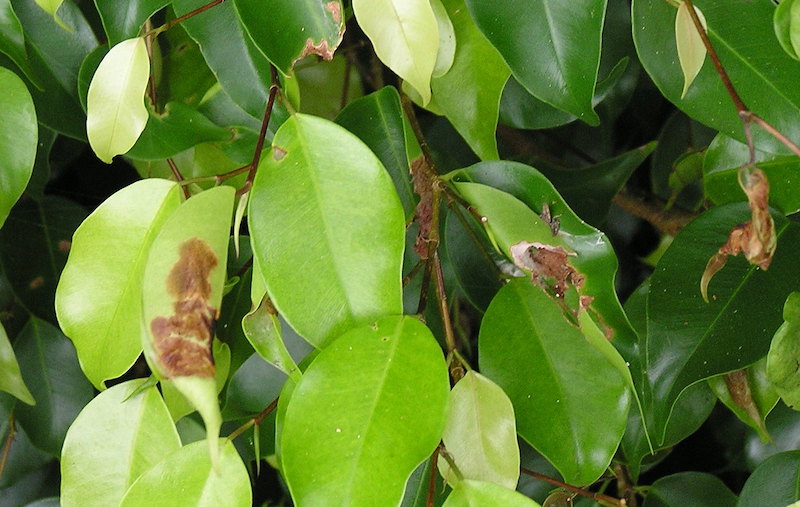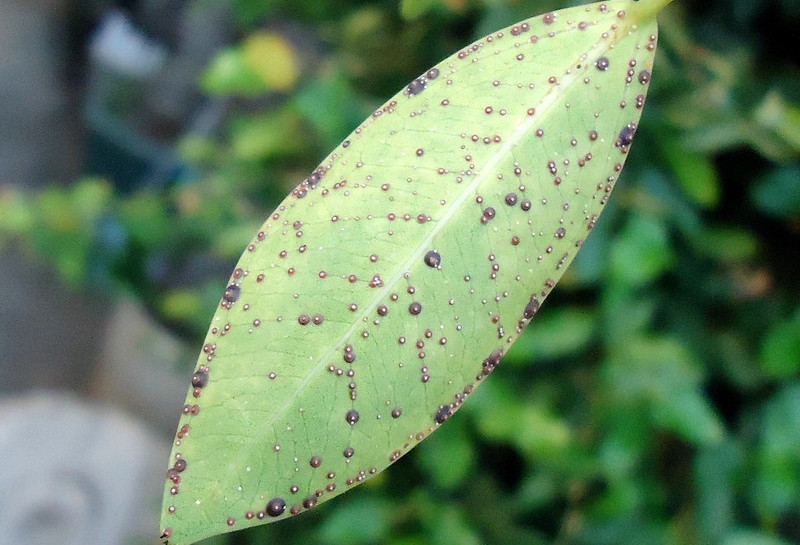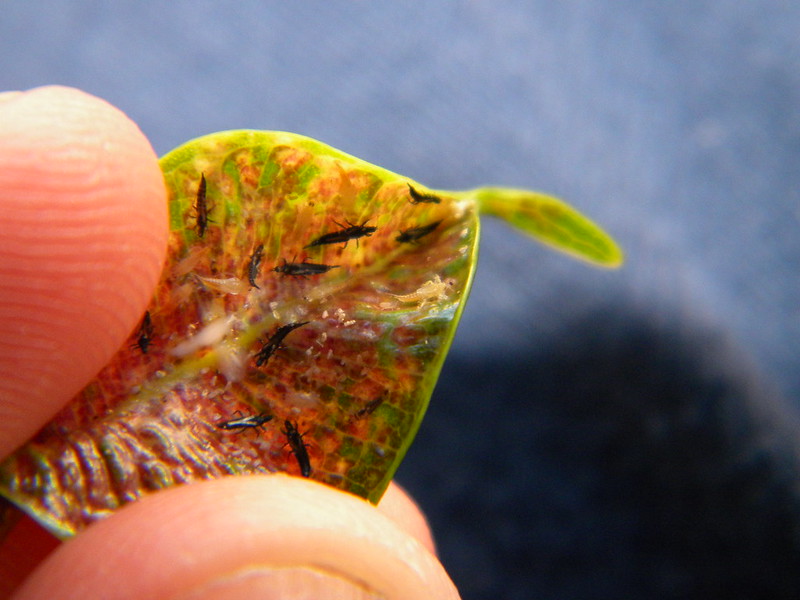Ficus Is Dying
Ficus’s emerald green foliage adds splashes of color to homes, offices, patios, balconies, entryways, and decks. Two common ficus species are Ficus benjamina, also known as Weeping Fig, and Ficus elastica, more commonly called Rubber Tree. They are natives of Southeast Asia and India and appreciate loamy, slightly acidic, well-draining soil. To bring out their maximum color, provide them with bright, indirect sunlight; temperatures between 65 to 75 degrees; and 40% humidity. This tropical plant can be sensitive to abrupt climate changes, so maintain consistent conditions to avoid stressing the plant.

Photo by Scot Nelson
When the environment changes, ficus often shows signs of stress with curling, yellowing, wilting, or dropping of the leaves. The most common cause is improper watering. Check the soil. If the top two inches of soil are saturated, your ficus needs a chance to dry out a bit. However, if the top two inches of soil are dry to the touch, then ficus needs a drink. Water deeply and mist the foliage. If ficus has no other problems, such as nutrient deficiency, pests, diseases, or insufficient pot size, this tropical should be smiling green again soon.
Ficus Leaves Turning Yellow
If your lovely ficus’s leaves have suddenly turned a distasteful yellow, improper watering, nutrient deficiency, over-fertilizing, pests, or diseases may be responsible. To diagnose watering problems, check the top two inches of soil. Yellow leaves accompanied by parched soil indicate the plant may be dehydrated. Yellow leaves accompanied by saturated soil point to too much water. While improper watering is typically the culprit, examine the plant and soil for signs of spider mites or overfeeding. For feeding, make sure you follow the instructions on the product label, and err on the side of underfeeding. Did you move the plant to a different place near a drafty window? If so, ficus may be sulking about the change in temperature and should be moved to a warmer location.

Photo by Ana Keliikuli
Ficus Pests
Mealybug, thrips, and scales show a particular fondness for ficus. Luckily these pests are easy to treat. Mealybugs are tiny oval insects with what appears to be waxy, white covering; thrips are small narrow, dark-colored winged insects; and scales are brown, white, or gray soft-bodied insects. All three of these pests suck essential fluids from ficus’s leaves. While these insects can sometimes be difficult to detect, their damage is easily identifiable. If you spot foliage dotted with groups of white eggs, ficus likely has a mealybug problem. Little waxy bumps on the leave’s undersides are a sign of scales. White blotches are likely a thrip issue. Regardless, treat each of these pests by first wiping them off with a damp cloth or with a forceful spray of water. Then, if they still refuse to leave, treat them weekly with Neem Oil or insecticidal soap.

Photo by Maximilian Paradiz, Unedited, Flickr, Copyright CC BY 2.0
Ficus Diseases
Three common diseases can afflict ficus: anthracnose, branch dieback, and bacterial leaf spot. Anthracnose is characterized by brownish spots forming on ficus’s leaves. Branch dieback appears as wilting, dropping leaves and dying branches. Bacterial leaf spot shows up as small areas of the foliage turning yellow before darkening to brown. While fungi cause anthracnose and branch dieback, bacterial leaf spot, as its name suggests, is caused by bacteria.
If bacterial leaf spot is the problem, remove and discard all infected foliage and refrain from watering the leaves. Treat both anthracnose and branch dieback with a copper-based fungicide; prune away the affected foliage and water only when the top 2 inches of soil are dry to the touch.
Ficus Not Blooming
While ficus is generally known for its attractive foliage, it does occasionally bloom when placed outdoors in warm temperatures. If you decide to move ficus outdoors for the summer, maximize its potential to flower by watering it appropriately and misting its leaves frequently, especially in drier climates.
 |
Author Suellen Barnes - Published 5-30-2023 |
